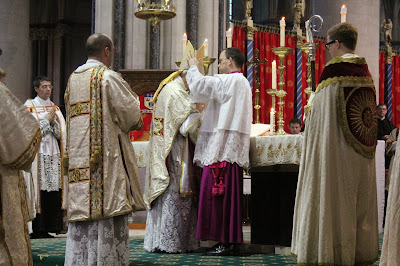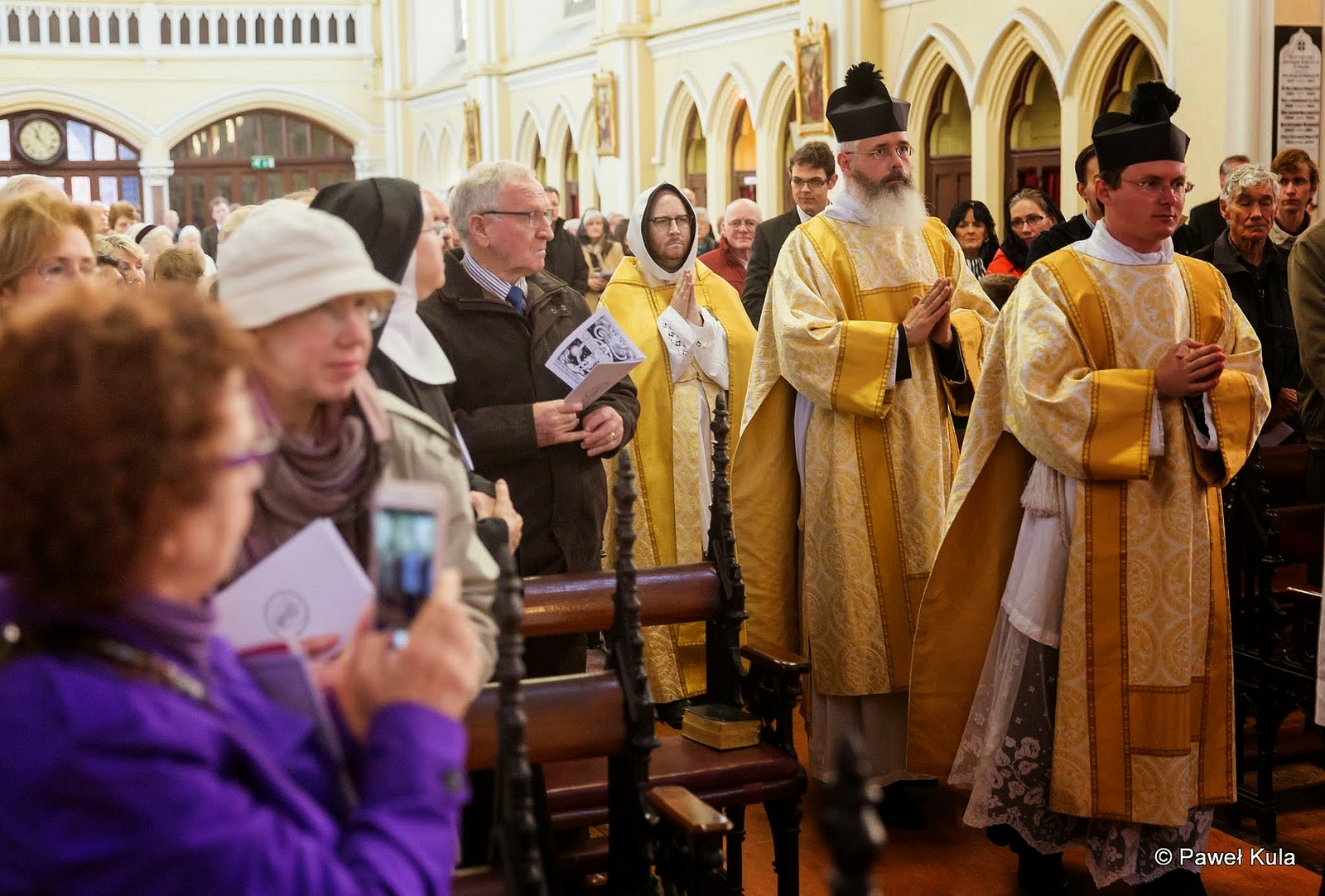Among his many other talents, Dr Peter Kwasniewski, who has made so many valuable contributions to this site over the last year and half, also composes sacred music of many different kinds. Complete information on the book itself, a number of audio samples of the compositions being performed, and ordering information are available at the website of
Corpus Christi Watershed; the publication is also complemented by three full-length CDs containing recordings of nearly every piece, performed by Matthew Curtis of ChoralTracks. These recordings are intended primarily as aids in repertoire selection, and to assist in the learning of the pieces; links to purchase are given on the CCW page linked above.
Peter recently gave an interview to the Cardinal Newman Society about the book, which you can read in the entirety by
clicking here. Here are some excerpts.
This new book, Sacred Choral Works, brings together my choral compositions from a 23-year period, that is, from 1990 to 2013. There are a total of 91 pieces—some are short psalm responses or Gospel acclamations for Mass, others are more extensive and demanding motets suitable for Offertory or Communion. To give a sense of the variety, the book includes several settings of the Mass Ordinary, doxologies, psalms, Marian pieces, six versions of the
Tantum Ergo, an
O Salutaris in English and in Latin, a number of English strophic hymns, Christmas, Lenten, and Easter music, a set of Holy Thursday antiphons for the washing of the feet, and three settings of the Reproaches for Good Friday. ...
Having sung many of these pieces with my own choirs over the years, I decided to publish Sacred Choral Works for choirs around the country that might be looking for beautiful and liturgically useful new music to add to their repertoires.There’s a vast amount of great choral literature—one could never exhaust it in many lifetimes—but, for one thing, much of it is extremely challenging, and, for another, I believe there’s an important place for fresh compositions that are nevertheless in profound continuity with the Catholic tradition.
How did your experiences as a student at Thomas Aquinas College (TAC) and The Catholic University of America (CUA), as well as teaching at several Catholic colleges, form you and impact your work?From my high school years on, music has been a tremendous passion for me, and as I delve ever more deeply into the sphere of sacred music, my wonder and delight continue to grow. Thanks to a wonderful composition and conducting teacher I was blessed to study with in high school (it was an all-boys Benedictine school in New Jersey), I began to compose in a serious way around the age of 18, and by the time I was helping [to] direct the choir at Thomas Aquinas College, I’d written a number of Mass settings and motets, which had their first performances there.
It would be impossible for me to exaggerate the value for my musical life of all that I learned and experienced at TAC and later CUA. Although the primary goods I gained from both schools were academic or intellectual (and, of course, lifelong friendships), their
environments were so full of vibrant cultural activity, particularly in service of the worthy celebration of the liturgy, that I simply couldn’t have grown the way I did without those special places. ...
What is the importance of sacred liturgy and its music?... To me, it is quite simple: Our Lord Jesus Christ chose to give Himself and His divine life to us through the perpetual hymn of praise offered up by His Church and through the seven sacraments —above all, the Most Holy Eucharist, in which the Lord renews His perfect sacrifice to the Father and gives us Himself as our nourishment. We cannot have the Body and Blood of Jesus unless we have the Holy Sacrifice of the Mass. And if we are aware of the stupendous magnitude, the awesome, holy, divine, immortal, life-creating mysteries we are adoring and receiving in this Sacrifice, how could we not yearn to give to the Lord all that we can and the very best that we can—all that is within our hearts, of course, but also the “externals”: the most beautiful works of art, be it the church itself and its furnishings, the vestments and vessels, the ceremonies, the music? All should be noble, uplifting, harmonious, in a sacred style, in continuity with the Church’s tradition, pointing unambiguously to the transcendent, the heavenly, the eternal. This is what Catholics have always done (or at least aspired to do) until recent decades of amnesia, and we must hope, pray, and work to recover this supernatural common sense, if I may so call it. ...
What do you hope people will gain from Sacred Choral Works?Naturally, I hope people will find in its pages well-crafted music that will enhance their choral repertoire for Mass and other devotions. The publisher and I took great pains with the beauty and clarity of the layout, providing translations of all Latin texts and organizing the pieces in a useful way—in the Table of Contents, by liturgical season or genre, and on the back cover, in alphabetical order for quick reference. ...
Do you have any other comments you would like to add?The Catholic world has been much agitated by the scandalous nature of what occurred recently at the Extraordinary Synod. Believe it or not, there is a real connection between this scandal and the devastation that was visited upon the liturgy and its music after the Second Vatican Council. The common denominator is accommodationism—the belief that it is the Church’s responsibility to adapt herself to modern man, to adopt his ways of speaking, thinking, acting. This is a colossal dead end, whether in liturgy or in morality. The Church’s role is to preach the truth of the Gospel to sinners (i.e. all of us), and convert us to the Gospel, so that we are the ones who must change, who must be conformed to Christ. ...
![]()
![]()





























.jpg)





















.jpg)


